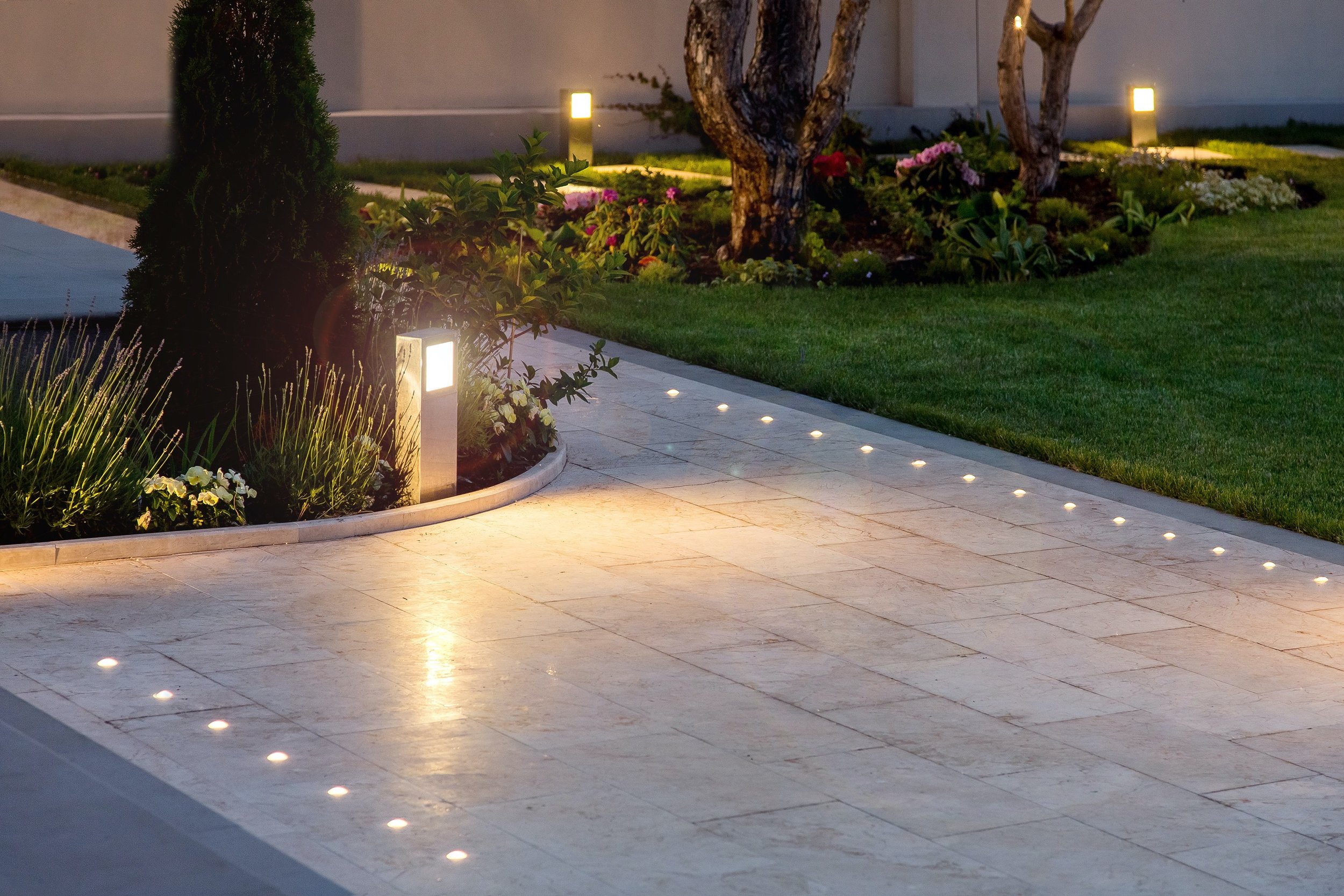The Hub of Outdoor Lighting: Everything You Need to Know About Landscape Lighting Transformers
It may not be the first item on your shopping list when it comes to a landscape lighting system, but a transformer is an essential piece that you can’t do without. A transformer keeps your outdoor lights safe and operable. Whether you’re installing a new outdoor lighting system yourself or having it done by the pros, it’s important to know the basics about what transformers are, what they do, and which type of transformer you’ll need. In this article, we’ll cover some of the most common questions about landscape lighting transformers as well as some of our product recommendations. Let’s jump in!
What Is A Transformer And What Does It Do?
A transformer converts voltage received from one or more circuits by either increasing it or decreasing it in order to meet the energy requirements of the light fixture(s). This is done in order to either collect electricity to go to a larger receiver or to disperse electricity to multiple receivers. Transformers are found everywhere a voltage needs to be converted, including homes.
Why Do You Need A Landscape Lighting Transformer?
The electricity used in homes in North America is distributed by utility companies at 120 volts. This is the standard voltage needed to operate the majority of appliances and electrical systems in a typical home. While some businesses and hospitals may have machines that require a higher voltage such as 220 volts, homes will rarely need more than 120 volts. Many appliances and systems in a home may require a lower voltage, however.
Low voltage landscape lighting is designed a more comfortable visual field in a landscape and to reduce electricity waste. These systems are intended to be much dimmer than indoor lights and they use far less electricity. Light fixtures in a low voltage landscape lighting system typically only use 12 volts. A landscape lighting transformer will convert the 120 volts into 12 volts, both drastically reducing electricity waste and preventing damage to the individual light fixtures or the system itself. This also means that you can combine multiple light fixtures on the same circuit, all adding up to the 120 volts that the transformer can convert.
Do You Need A Special Transformer For LED Landscape Lights?
All lights require a transformer somewhere along the line, whether it’s inside the unit itself or an external transformer unit. For LED landscape lighting applications, a transformer is definitely necessary. While there are many DIY landscape lighting guides online, a complex LED landscape lighting system designed for multiple lights including patio, walkway, driveway, entryway, pool, deck lights, and other lighting throughout the landscape will need a transformer as part of the plan.
What Transformer Do You Need For LED Lights?
Knowing exactly the transformer you need for an LED landscape lighting system first requires you to know exactly which light fixtures you’ll be using, and how many. The specifications of these lights are crucial to a calculation of the power needed.
Simply multiply the number of lights in a system with the wattage required for each light - for instance 10 LED lights that each use 7.5 watts, for 75 watts. Then, add together each light system you plan on attaching to a transformer. For example, two 75 watt light systems will equal 150 watts. Then, multiply this number by 1.25. This extra wattage will be in case of a power surge or if you plan on expanding your landscape lighting in the future. 150 watts with an additional 25 percent is 187.5 watts, so a transformer that can handl 200 watts is definitely a safe bet.
Which Size Transformer Do You Need? How Many Watts?
The most common transformer used in landscape lighting applications can handle up to 300 watts. A transformer of this size will be able to power the majority if not all of your walkway lights, patio illumination, and any other lights that enhance your landscape and home. While there are lots of transformers on the market, only the largest landscapes will need a transformer that can handle more than 300 watts. If you’re in doubt about the capacity and/or size of your system, we recommend you work with a qualified electrician.
How Do You Size A Landscape Transformer?
Using the simple math we described earlier will help you determine the minimum size transformer that you may need. The total wattage of your lights multiplied by 1.25 will tell you what your landscape needs in the current renovation cycle, but you may want to plan ahead as well. Don’t go too overboard and get a transformer that’s double the size, but in the case that you want to fill in some gaps in the future you can always add more landscape lights with the next biggest size transformer.
How Do You Choose A Landscape Transformer?
Once you determine the wattage that you need in a transformer, there are a few other considerations to make. Two types of transformers are available: magnetic and electronic. There are few differences in the efficacy of these two, but electronic transformers have modifications to make them more compact. If you’re working with a smaller space, you may want to consider an electronic transformer over a magnetic one. Many transformer models also come with an enclosure, or a metal box that helps to protect the unit. This is always a good idea to include and you may want to search for an enclosure if it’s not included in the package.
Where Should A Landscape Lighting Transformer Be Placed?
The first thing to know about your transformer is whether or not it’s waterproof. By and large, transformers are intended to be placed outside and are designed completely waterproof. The transformer should be as close to your landscape lighting system as is practical since this will avoid too much voltage drop from the electricity traveling a longer distance. The transformer should also be near to a ground fault circuit interrupter (GFCI) outlet, which is absolutely necessary for a safe landscape lighting system. If there isn’t one on your property, you’ll need to have it installed by an electrician.
A transformer should also be placed at least 12 inches off the ground to avoid water splashing up from rain or snowmelt. Many transformers are mounted on a wall or the side of your home. Remember that even with its enclosure, it won’t be the most attractive addition to your landscape. Don’t mount it too high off the ground as this will extend the wire length needed and make it more visually prominent. You can hide the transformer by placing plantings or a privacy screen around it, but not too close! In case something happens, you’ll want electricians to be able to access it as necessary.
Recommendations for Landscape Lighting Transformers
When it comes to a low voltage LED landscape lighting transformer, there’s nowhere we’d direct our readers than the 300W LED Low Voltage Transformer from VOLT. While there’s also a 100W model of this transformer, you don’t want to promise that your landscape lighting system will stay that small forever. It’s a low profile magnetic transformer that mounts to a wall. A photocell timer allows you to set when your lights will be turned on and off or just let it rely on the sunlight it senses. It’s a great product that VOLT will stand by as they offer a lifetime guarantee for this transformer.
In the case that you need a larger landscape lighting transformer, we recommend keeping with the quality guarantee of VOLT transformers. The 600W Clamp Connect Low Voltage Transformer with Timer/Photocell is a fairly heavy duty transformer for home landscape lighting systems. It’s professional grade, so you know that landscape designers and electricians can recommend it.



